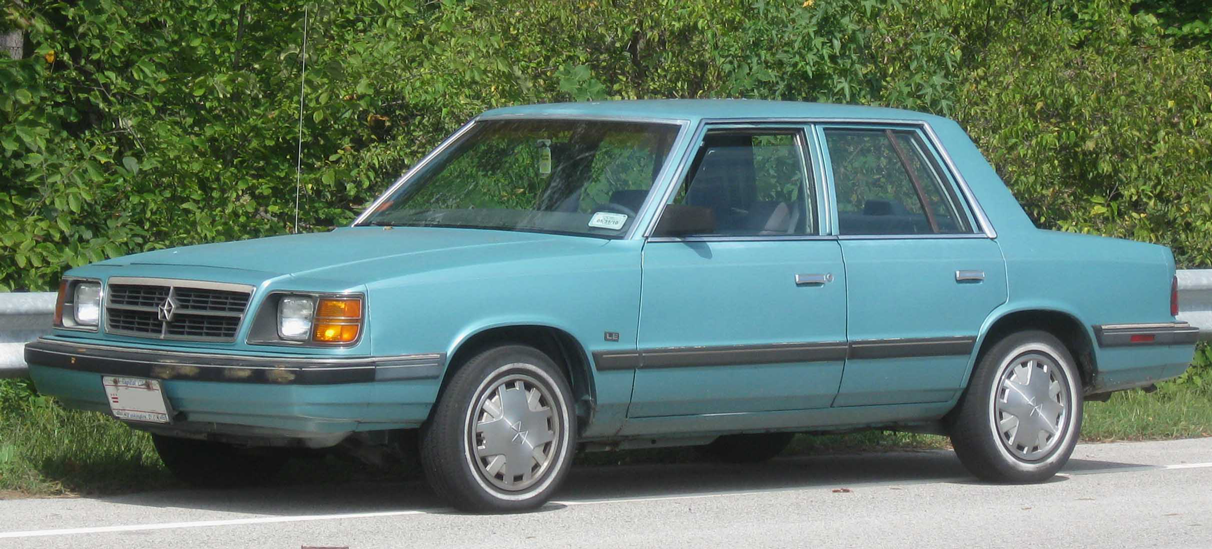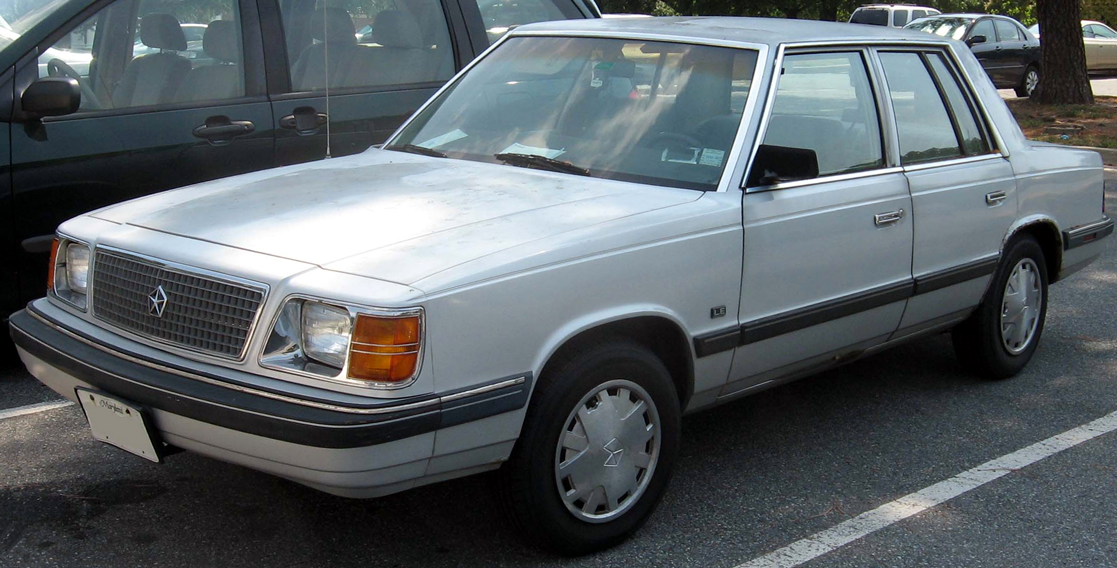Chrysler's K Cars
by Andy Boyd
Today's episode is brought to you by the letter K. The University of Houston presents this series about the machines that make our civilization run, and the people whose ingenuity created them.
The 1970s proved a disaster for U.S. auto makers. Entering the decade, nearly nine of ten cars on U.S. roads were made in America. But as gas prices spiked, fuel efficient Japanese cars made inroads into the U.S. market. By the end of the decade the big three auto makers were facing potential bankruptcy. Hardest hit was Chrysler, leading Congress to pass the controversial Chrysler Corporation Loan Guarantee Act of 1979.
But money alone wasn't going to save the ailing giant. Chryslers weren't just gas guzzlers, they were poorly made. The company's image took a huge hit when the Dodge Aspen and Plymouth Volare went through recall after recall. Wrote Popular Mechanics, "It was almost unfathomable how many screw-ups had been engineered into these very ordinary cars."

1977 Plymouth Volare and 1973 Plymouth Valiant Coupes. Photo Credit: Flickr/Alden Jewell
What Chrysler needed was better engineering and better leadership. Both arrived with Lee Iacocca. Iacocca had been a successful executive at Ford, overseeing the introduction of such products as the Ford Mustang. But in 1978 a falling out with CEO Henry Ford II led to Iacocca's dismissal. Chrysler was only too happy to bring the former Ford executive on as its new CEO.
Iacocca arrived at Chrysler just as two new cars, the Dodge Aries and Plymouth Reliant, were coming to market. Using a marketing technique known as badge engineering, the cars were identical apart from a few accessories. This allowed Chrysler to build one product but sell two, setting different prices based on brand perception. It's a common practice not just with cars, but with products as diverse as clothing and home appliances. Also common for car makers is the practice of platform reuse. A sedan and station wagon might have different bodies but share the same chassis, engine, and drive train.

1986-1989 Dodge Aries. Photo Credit: Wikimedia Commons

1986-1989 Plymouth Reliant. Photo Credit: Wikimedia Commons
For Iacocca, the platform on which the two new cars were built offered the way out for Chrysler. Known as the K car platform, it would become the centerpiece of Chrysler's turnaround. Not only was it less expensive to produce cars built on the same platform, they could be built more reliably with tightly focused engineering. And to top things off, Iacocca's onscreen presence in TV ads proved just the right formula to reassure the public that Chrysler wasn't going anywhere. His tagline? "If you can find a better car, buy it."
Just over two years after their introduction, K cars represented half of Chrysler's sales. And the company was only getting started. A nip here. A tuck there. K cars and their variants propelled the company forward. They even provided Iacocca a means by which to make history with a design concept he'd brought from Ford; a concept Henry Ford II wanted no part of: the minivan.

1984-1986 Plymouth Voyager. Photo Credit: Wikimedia Commons
I'm Andy Boyd at the University of Houston, where we're interested in the way inventive minds work.
(Theme music)
J. Huffman. "5 Most Notorious Recalls of All Time." January, 2010. From the Popular Mechanics website: http://www.popularmechanics.com/cars/g261/4345725/?slide=5. Accessed May 3, 2016.
"Chrysler K Platform." From the Wikipedia website: https://en.wikipedia.org/wiki/Chrysler_K_platform. Accessed May 3, 2016.
'The K Car: Variations on a Theme that Helped to Save Chrysler.' New York Times, January 29, 1984. From the website: http://www.nytimes.com/1984/01/29/automobiles/the-k-car-variations-on-a-theme-helped-to-save-chrysler.html. Accessed May 3, 2016.
This episode was first aired on May 5, 2016